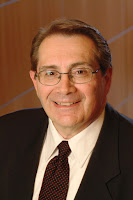By Bhargav Rajan
Senior Research Analyst
Healthcare Division, Technical Insights
Frost & Sullivan
When Norman J Holter developed the world’s first ambulatory cardiac monitor, and arguably the world’s first wearable device, it weighed 85 pounds and it had to be worn like a backpack. Since the modern transistor had not been invented then, the electrical data that the device picked up from the patient’s heart had to be transmitted through radio signals. For the very first time, a patient’s electrophysiological activity was recorded while he was mobile, although Holter himself noted that the form factor of his revolutionary device was “not practical”. By the end of his lifetime, he had successfully managed to shrink the device to the size of a briefcase.
Even a visionary such as Holter, who dreamt of a device that would measure cardiac activity on “skiers, parachute jumpers and runners”, would be surprised to find today’s explosive growth and rapid innovations in the field of wearable devices.
The Plateau
Yet, in spite of the pace of innovations, it appears that the field of wearable devices has hit a plateau in the technology adoption cycle. The effusive reception that smart watches and wristbands were welcomed with a few years ago, has been replaced by a bit of a disappointment with their capabilities. Every product launch is preceded with great anticipation and is met with grumbling acceptance of the new product’s incremental improvements. Nearly all forms of wearable devices – wristbands, watches and glasses – have been touted as the “next big thing” in consumer electronics, only to settle down in public memory as a “work in progress”.
A major reason for this adoption plateau is that the current crop of wearable devices does very little other than track physical activity. In other words, wearable devices have become synonymous in the minds of the users - and perhaps developers as well - with activity trackers. Wearables are indeed a great tool for tracking physical activity (FitBit, Misfit, Moov) and sleep patterns (Pebble, Jawbone), but it would be a great travesty if they end up doing just that. Beyond fitness tracking is an ocean of medical and wellness applications for wearable devices that is yet to be explored.
We have identified emerging and future healthcare applications of next-generation wearable devices, Wearables 3.0, classified under diagnostics, monitoring and therapeutics. The delineation between monitoring and diagnostics is a thin line in the case of wearables. Diagnostic wearables are used to confirm the presence of a particular health condition, an erratic heart rhythm, or brain signals indicative of seizures. Wearable devices used for monitoring measure and store physiological data continuously, usually to gauge the progress of a treatment. Therapeutic wearable devices refer to their use in the treatment of clinical conditions.
Wearables 3.0
Wearable devices are built on a simple technological foundation – record physiological data and use them to monitor the overall well-being of the user. So why limit to just measuring electrophysiological data from the wrist to calculate pulse, or use the gyroscope to measure the steps taken in a day?
Health Diagnostics and Wellness Monitoring
EEG Headsets
A particularly interesting wearable device that is on the cusp of mass adoption is the wearable EEG device. No less than a dozen companies (Emotiv Lifesciences, Neurosky, Interaxon, Advanced Brain Monitoring, Thync to name a few) are developing lightweight, wireless and portable EEG headsets. Designed as simple headbands or helmets, these devices can record the brain activity and wirelessly transmit the readings to a paired phone or a computer. In a manner of functioning, portable EEG headsets work the same way as heart monitors and wrist bands. Continuous monitoring of brain activity can of course provide information about the quality of sleep, but beyond that, it can warn of impending seizures, give insights into mood swings, cognition and emotional states of the user. Given the growing awareness of mental health, wearable brain activity monitors can play an important role in the years to come. Wearable EEG headsets are the foundation on which the promising and much-researched field of brain-computer interfaces rests on.
eLens
Around 2013, just as critics were panning the Google Glass for being “gimmicky”, news tricked out that Google was developing a far more cutting-edge wearable eye device - a smart contact lens or an electronic lens. The lens was supposed to be lined with electronic sensors that could measure the level of glucose in the wearer’s tears and transmit it to a receiver nearby. In rapid succession, companies such as Sensimed and Johnson and Johnson and a host of university research groups revealed that they too were working on electronic lenses. Electronic contact lenses are very much in the prototype stage, and make take a few years to enter the market, but their potential is undeniable. From monitoring glucose levels without drawing blood, measuring the intra-ocular pressure, perform routine eye tests and augment vision, their applications are myriad, based only on the sensors that form the lens architecture.
Smart Fabrics
One of the disappointments with the current generation of wearable devices is that they are bulky, conspicuous by their design and positioning, and not always fashionable. The most intuitive solution to these concerns is of course to completely integrate the electronics and sensing capabilities into the wearer’s fabric. Enter smart fabrics. Smart fabrics are a class of textiles that can, among other functions, communicate, monitor, transform and even conduct energy. The variety of players who are investing in and actively researching the smart fabrics landscape is staggering and speaks to the potential of the technology. Sportswear experts such as Nike and Adidas, sensor companies such as BeBop Sensors and clothing companies such as AiQ Smart Clothing, Levis and many more along the technology chain are working on intelligent, interactive and functional fabrics.
eTattoo
Perhaps the ultimate form of technology integration would be to have the wearable devices embedded on to the skin of the user – sort of an electronic tattoo. Firmly in the realm of academic research, these “devices” are actually stretchable skin-like material with electronic Okcircuits and sensors printed on them. These “tattoos” can sense electromyographic signals, measure blood toxicity levels, pick up the precise electrical data from the heart or brain, accurately measure core body temperature and so on. Aided in no small due to the rapid innovations in flexible electronics and ultrathin sensor systems, these skin-hugging wearables may be the final destination that began with an 80-pound wearable device.
Therapeutics
Drug Pumps
A truly niche wearable medical device would be wearable drug injectors, or pumps. As the name suggests, these are body-worn cartridges or reservoirs of essential drugs – monoclonal antibodies, immunoglobulins, biologics and so on – drugs that cannot be administered orally due to pharmacokinetic complications. An effective, and automated, method of delivering medications would be body-worn devices that would subcutaneously deliver medications at pre-set quantities and at the appropriate time. Such wearable devices would greatly benefit patients on chronic medications, such as insulin, and patients with a propensity to forget medications ensuring compliance to prescribed medication. Already companies such Amgen MedImmune and Unilife have wearable drug injectors. Given the wearable injectors are in the interest of the multi-billion dollar biologics market, this class of wearable devices are also likely to be an area to watch out for in the near future.
Neurostimulation
Electrical stimulation of the brain and the peripheral nervous system has been a clinical practice for several decades now. This involves the use of wired electrodes supplying mild electrical impulses to manage pain, restore hearing, manage and control seizures, tremors and so on. With the advent of wearables, neurostimulation can be made available as over-the-counter use, outside the clinical setting. Belgium-based Cefaly Technology has developed portable headbands that supply micro-impulses that stimulate the trigeminal nerve, as a way of compensating for electrical activity that leads to migraine headaches. Massachusetts-based NeuroMetrix has two wearable products that are designed to provide non-invasive neurostimulation to provide relief from chronic pain caused due to diabetes, sciatica, fibromyalgia, and other conditions.
Enabling Technologies
Throughout the year, Technical Insights, the technology consulting arm of Frost & Sullivan, identifies and profiles innovations in various industries, keeping our finger on the pulse of the global innovation landscape. Of the hundreds of technologies, products and platforms that we write about, we identify 50 technologies that we believe will make a big impact in the following year. When we did this exercise earlier this year, we noticed that no fewer than 10 technologies that made it to our top 50 list were directly driving innovations in wearable devices. Technical Insights’ TechVision 2015 identifies and provides a multi-dimensional profile of technologies such as flexible electronics, smart sensors, smart fabrics, lightweight composites, sensor fusion, cloud computing, neuroprosthetics and brain-computer interface, each of which are key to the burgeoning field of wearable devices.
Beyond Quantified Self
Earlier in the article, I mentioned that the term wearable devices have come to be associated with activity tracking. The plethora of technologies that were subsequently described throws light on the possibilities beyond quantified self. Wearable devices are certain to change the nature of fitness, health monitoring and drug delivery. But even these do not describe the picture in its entirety.
Every aspect of healthcare – surgery, medical imaging, wound care, diagnostics, health informatics, population health management – stands to be benefitted by wearable devices. It would not be an exaggeration to view wearable healthcare devices, or healthwear, as the single biggest enabler of personalized healthcare delivery.
-----------------------------------------------------------------------------
Bhargav Rajan is a Senior Research Analyst working with the Healthcare Division of Technical Insights, Frost & Sullivan. He tracks innovations in medical devices, medical imaging, clinical diagnostics and healthcare practices. Bhargav holds a Master’s degree in Biomedical Engineering from the University of Florida, Gainesville, and has academic and industry experience in regenerative medicine and tissue engineering. He can be reached at bhargavr@frost.com.
TechVision is the flagship research service of Technical Insights. The TechVision program profiles and analyzes the growth dynamics of 50 cutting-edge technologies. To know more about these technologies, how they converge with each other and how you can use this information to your growth advantage on our website.
-----------------------------------------------------------------------------
Look for Bhargav Rajan and other Frost & Sullivan Analysts at our next
Medical Technologies 2016: A Frost & Sullivan Executive MindXchange event.






